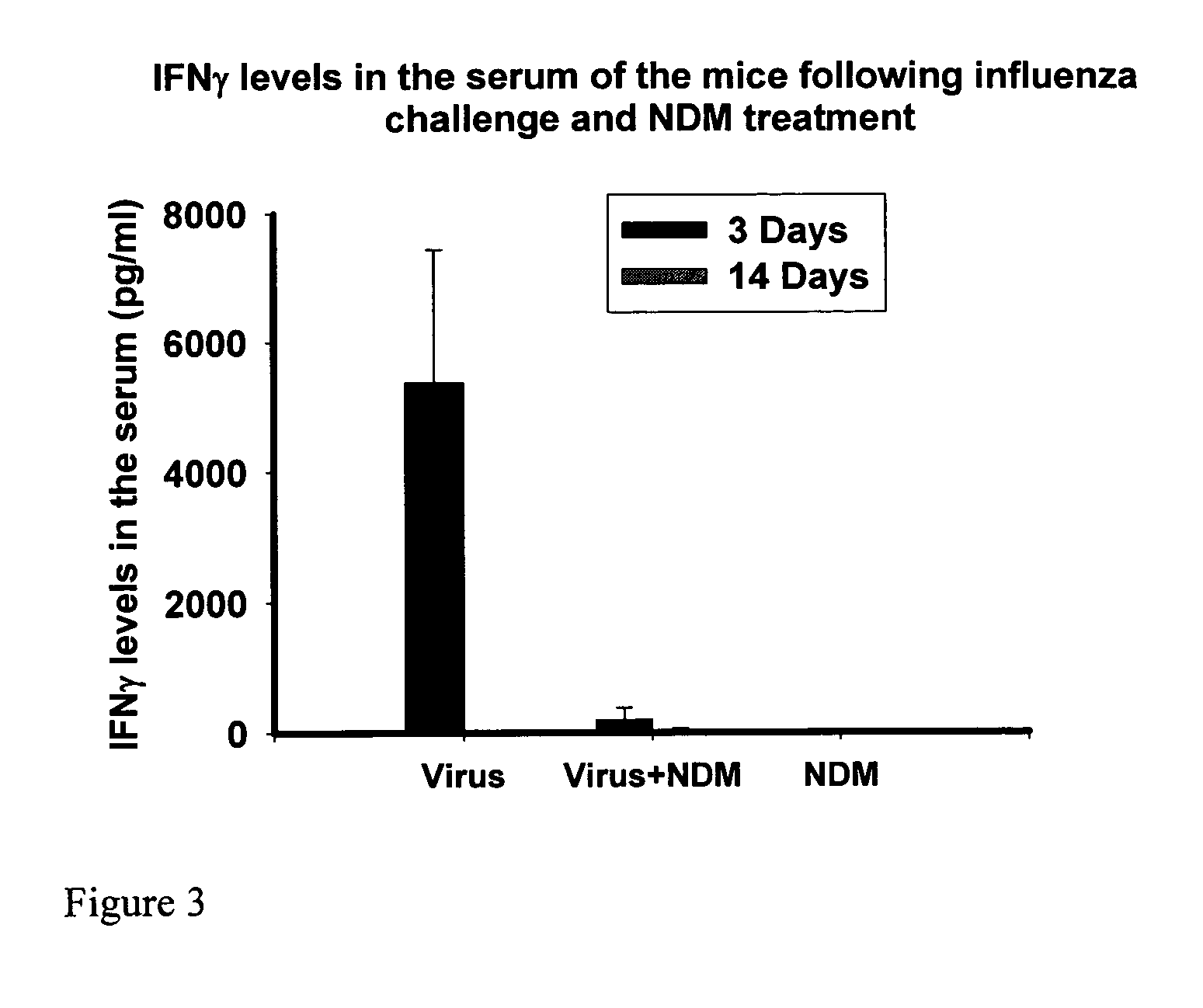Methods of treating against viral infection using berries juice fractions
a technology of berries and juice, applied in the field of fractions isolated, can solve the problems of severe world-wide economic burden and lower protection of vaccines, and achieve the effects of preventing virus adsorption, increasing the survival rate of infected mice, and inhibiting hemagglutination (ha)
- Summary
- Abstract
- Description
- Claims
- Application Information
AI Technical Summary
Benefits of technology
Problems solved by technology
Method used
Image
Examples
specific examples
[0070] In the following examples, the activity of NDM on influenza virus-mediated red blood cells (RBC) hemagglutination (HA), in vitro replication of the virus and in vivo infectivity of the virus, were tested.
[0071] Cranberry juice from the American cranberry, Vaccinium macrocarpon, and a proanthocyanidin-rich fraction were obtained from Ocean Spray, Inc. [Ocean Spray Cranberries, Inc, Lakeville-Middleboro, Mass. 02349]
[0072] To obtain the polymeric material having molecular weight ≧12,000 kDa, the juice was dialyzed at 4° C. for 10 days against distilled water, changed ten times, in dialysis bags of ≧12,000-14,000 MW cut-off and lyophilized. The non-dialyzable material (NDM) exhibits tannin-like properties, is highly soluble in water, devoid of proteins, carbohydrates and fatty acids and contains 56.6% carbon and 4.14% hydrogen (Ofek et al., 1996, ibid).
Influenza Virus
[0073] The following influenza virus strains were used: [0074] 1. A / PR / 8 / 34 H1N1 grown in th...
PUM
 Login to View More
Login to View More Abstract
Description
Claims
Application Information
 Login to View More
Login to View More - R&D
- Intellectual Property
- Life Sciences
- Materials
- Tech Scout
- Unparalleled Data Quality
- Higher Quality Content
- 60% Fewer Hallucinations
Browse by: Latest US Patents, China's latest patents, Technical Efficacy Thesaurus, Application Domain, Technology Topic, Popular Technical Reports.
© 2025 PatSnap. All rights reserved.Legal|Privacy policy|Modern Slavery Act Transparency Statement|Sitemap|About US| Contact US: help@patsnap.com


